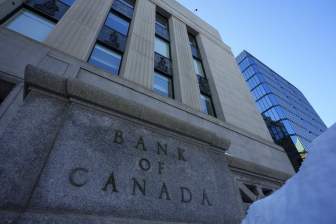After three straight months of climbing unemployment rates, British Columbia’s economy has shown some signs of improving.

According to Statistics Canada data released early Friday morning, B.C.’s unemployment rate dropped from 13.4 per cent to 13 per cent.

B.C’s. economy added 118,000 jobs as the province starts to slowly reopen after major restrictions were put in place to deal with the ongoing COVID-19 pandemic.
But the province’s economy seems to be falling behind the national averages.

Get daily National news
StatCan says the national economy added 953,000 jobs in June, including 488,000 full-time and 465,000 part-time positions.
The unemployment rate dropped to 12.3 per cent in June after a record high of 13.7 per cent in May.
The full economic effects of COVID-19 are still very much unknown. Finance Minister Carole James is scheduled to give a fiscal update next week, the first snapshot of B.C.’s economy since the pandemic started.

Federal Finance Minister Bill Morneau presented numbers this week showing the federal deficit is now forecast to be more than $343 billion.
When looking at overall employment, B.C. has 261,000 fewer people employed now than a year ago.
The youth unemployment rate continues to go up. For those 15 to 24 years old, unemployment is now 29.1 per cent, up from 28.9 per cent.
“Women are more likely to have lost their job due to COVID-19 than men, and youth unemployment remains high at a staggering 29%,” Finance Minister Carole James said.
“However, the significant number of youth who entered the labour force in June is a sign of growing confidence that people can return to work safely.”
Overall, provincewide, the service sector is showing the largest rebound, mostly because the largest losses were in those sectors. The accommodation and food service sectors added 54,800 jobs in June after restaurants and hotels slowly opened back up and restrictions on travel were lifted.
In Vancouver, the unemployment rate also went up, from 14.1 per cent to 14.2 per cent. Unemployment in the province’s largest metropolitan area was slightly ahead of the province’s total unemployment average.








Comments